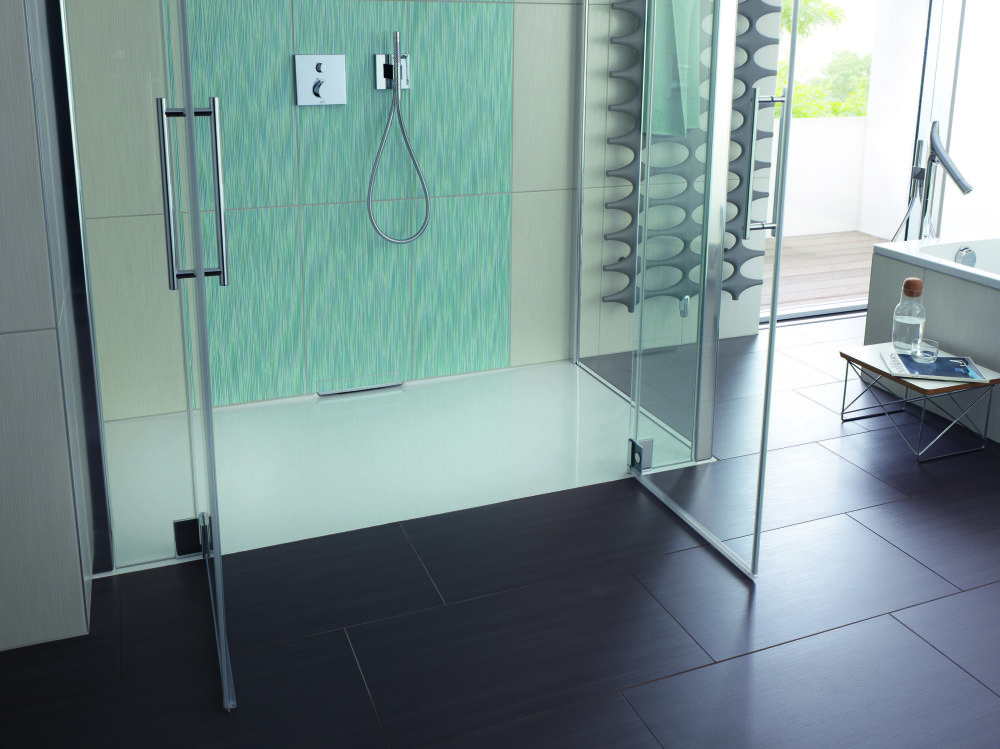
Asklepios architect Michael Scherer campaigns for sustainability in hospital
construction
St. Ives, July 2014. The Asklepios Group today is one of the largest companies in
the German healthcare sector. It currently operates more than 150 healthcare
facilities with some 26,500 beds and over 45,000 staff in Germany and abroad.
Corporate social responsibility in the group extends not only to its innate mission
to provide high-quality medical care; the Green Hospital Program initiated by
Asklepios in 2010 also created the first comprehensive network alliance
promoting responsibility for the environment, medical prevention and
sustainability. Hospitals, doctors, experts and partner companies in this forwardlooking
initiative are focused on developing approaches to a “green” hospital. As a
member of the program, Kaldewei is currently fitting a model room at the
Asklepios private clinic St. Wolfgang in Bad Griesbach with the seamless
enamelled shower surface Xetis with integrated wall outlet as part of the research
project “Greening the Patient Room – The Patient Room of the Future”. For the
project, the shower surface was provided with the Kaldewei Secure Plus finish.
Engineer Michael Scherer, senior project manager of Corporate Architecture and
Construction of the Asklepios Group, explains the advantages of floor-level shower
surfaces made of Kaldewei steel enamel 3.5 mm for hospital environments.
Mr Scherer, why is sustainability such an important aspect to the Asklepios Group?
Michael Scherer: “Sustainability is a big issue for hospitals, much as it is for other
businesses in the industry. One of the reasons here, obviously, is social
responsibility. We must ensure efficient use of the resources available to us. But
there are also economical factors to consider: Day-to-day operations at a hospital
involve processes that place a relatively high burden on our environment. Take the
cleaning, for instance: hygiene is paramount in a hospital, but chemical
disinfectants are harmful to the environment and they are expensive. They can
also be too aggressive for certain surfaces and easily cause damage. What we need are fittings or surfaces that are hygienic and durable enough to withstand frequent cleaning – preferably without chemicals.”
What was your experience with materials used so far?
Michael Scherer: “The shower areas in our patient rooms still largely have conventional tiling. The disadvantage here is the amount of grout joints. In 85 per cent of the cases, problems arising in the wet area are due to grout joints. They quickly become unhygienic and require even more cleaning. A grout joint and a hygienist will always be at odds. Our cleaning crew has pleaded for ages that we keep the grouting in wet areas to an absolute minimum, as it causes significant problems for cleaning. Add to that the fact that grout joints can crack and cause structural damage due to moisture penetration. We’ve had such a case recently in one of our hospitals. The tiling in the shower areas got damaged and soaked the floor underneath, corroding the heating pipes. It caused huge havoc – both structurally and in economic terms. Which proves exactly my point: Any grout joint is one too many. So long as I’m responsible there will be no more tiled shower areas.”
How does damage caused by defective tiling affect hospital operations?
Michael Scherer: “The defective shower areas need to be replaced without interrupting operations. This brings with it significant difficulties. The affected patient rooms need to be closed off for a day or two, and the whole affair obviously costs a lot of money. Hospitals are usually refurbished once every 30 years. That’s a problem where tiled shower areas are involved. Our approach therefore is to invest from the start in a quality solution without grout joints that will in the end last for much longer. The 30-year material guarantee for Kaldewei steel enamel was an additional bonus here.”
